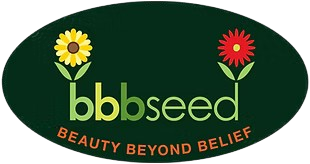Growing for your Freezer
The Ins and Outs of Freezing Your Produce
by Sandy Swegel
The avid vegetable growers on my gardening email list have noted that alas, despite trying to plan well, their freezers and pantries are almost bare despite the fact that there’s still snow on the garden. We’re fortunate to live in times with well-stocked grocery stores.
We’re also lucky to live with reliable electricity. I know how to can and make preserves, but the freezer is still the easiest way I know how to easily capture garden produce at their peak. I keep a baking pan in my freezer and bring in surplus I’ve picked that I won’t use today and after washing, spread the beans, peas, corn, cherries or strawberries on the baking pan for a kind of home flash freeze. Later when I have time, I bag up the frozen item to protect them from freezer burn. Easy and fresh. And despite what all the books tell us, we’ve had really good luck with freezing produce without blanching it first.
Suggestions on what items are good for freezing: Tomatoes of course…Sauce or diced, roasted or stewed. We agree tomatoes are the most versatile item in your freezer.
Prepared meals: ratatouilles, bean stews, chilis, lasagnas, stuffed peppers. Who isn’t delighted to find a home-grown, home-cooked meal in the freezer on a cold January evening ready to thaw and eat.
Individual vegetables, loose. Here I take inspiration from the freezer section of the grocery and make small Ziploc bags of everything the grocery store freezer section supplies: beans, corn, peas, okra, black-eyed peas, baby limas, cauliflower, broccoli, Brussels sprouts, red and yellow peppers. Basically, anything that would make a quick side vegetable to balance out a meal or something to give a soup or stock some extra zip. One great suggestion I’ll try this year is to freeze poblano peppers whole ready for stuffing.
Pre-cooked foods. Here’s where I’ve learned that pre-cooking some foods turns ordinary vegetables sublime. Frozen cut spinach isn’t too impressive, but frozen spinach previously braised in olive oil and garlic is sublime. Likewise, braised mixed kale with a splash of tamari is welcome. A great way to freeze these greens is to lay them on freezer paper in a long thin log and wrap them up. Cut off a section of what you need and return the log to the freezer. Cooked and seasoned beans. I love green beans fresh but there’s something about them frozen plainly that is unimpressive. But I like heartier beans like broad beans that have been cooked and seasoned. Potatoes. I’m still experimenting with potatoes, but I’m so crazy for mashed potatoes that frozen individual servings of mashed potatoes with a little gravy disappeared by December. The texture wasn’t as great as fresh…but they’re still mashed potatoes! Shredded potatoes for hash browns are pretty good too. Roasted eggplant slices….ready to go for lasagna. Baby beets, well-cooked and seasoned. Stir-fry mixes of favorite vegetables pre-cooked to almost doneness.
Fruit. You can’t make enough of this. Keep trying, but whether dried or frozen, cherries, raspberries and peaches just disappear. There’s still applesauce and a few strawberries in my freezer and some dried cherries I didn’t see. Freeze more next year!
Now that my freezer is almost empty, I know how to plan for this year’s garden. Plant more of the foods that disappeared by December and fewer of the foods that are still frozen from the year before last.

